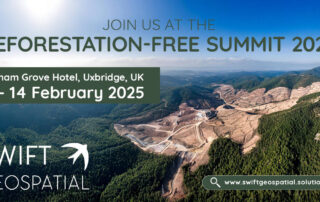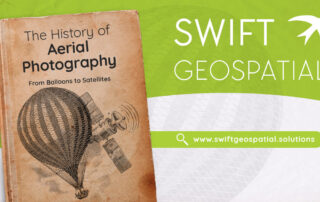Deforestation-Free Summit 2025
Swift Geospatial is attending the Deforestation-Free Summit 2025 on February 13–14 in Uxbridge, UK, where Michael Breetzke will present a case study on a successful deforestation monitoring project. Learn how GIS and satellite imagery support EUDR compliance and proactive deforestation risk management. Visit our booth to explore how our cutting-edge monitoring solutions enhance supply chain due diligence and sustainability efforts.










